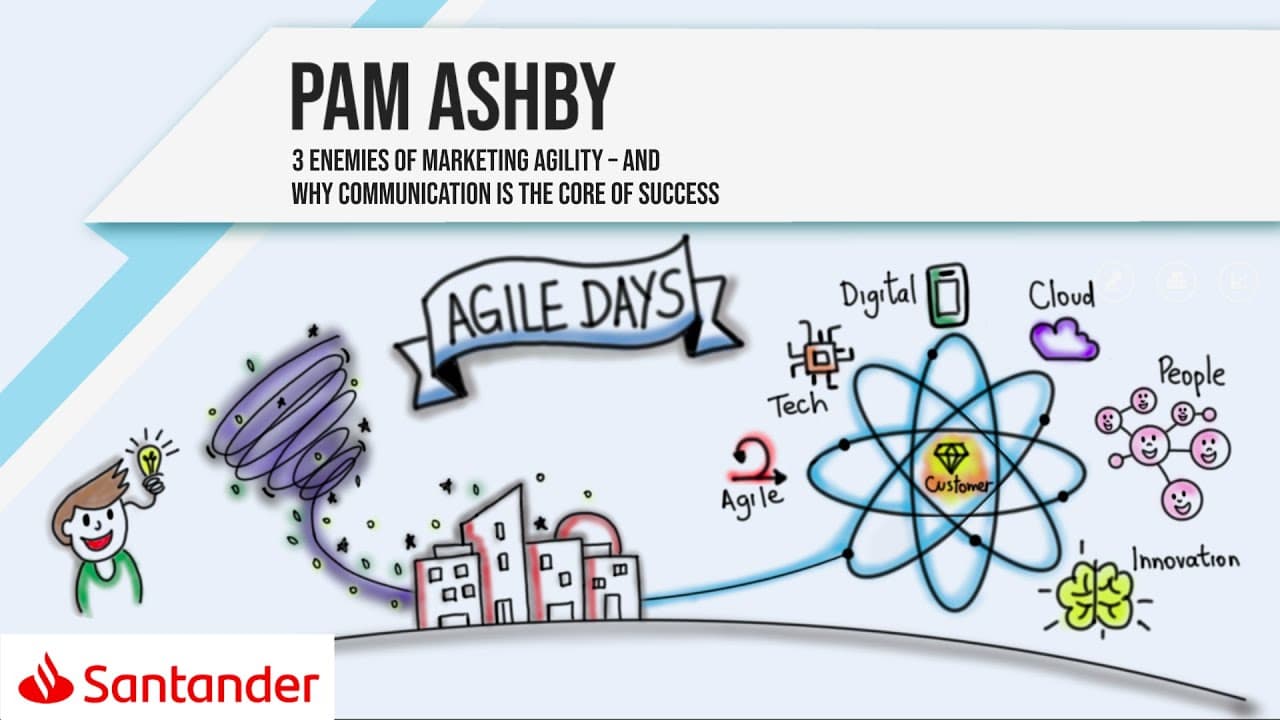Are you thinking, "Great, it's Thursday! Tomorrow is Friday, and then it's the weekend!"
Or are you thinking, "It's Thursday, and I haven't done everything I meant to do this week," with a bit of panic setting in because there are only two days to go?
Are you feeling productive or overwhelmed?
The Marketer’s Thursday Struggle
As marketers, we often fall into the "Oh no, it's Thursday" camp. Today, I'm going to talk to you about that and how Agile can help. We'll explore how we can be successful as marketers—for ourselves, for our organizations, and most importantly, for our customers.
Understanding Agile Marketing
First, let's consider the notion of Agile marketing. For me, Agile marketing is an ethos and a set of principles designed to get the right things done quicker and more effectively than through traditional routes. At the core of Agile marketing is communication.
As a career marketer, coach, and project manager, my suggestion today is that by prioritizing communication, we can eliminate the enemies of agility before they weaken our process, productivity, and purpose.
The Three Enemies of Agile Marketing
Do you like my dragons? I'm suggesting that these are the enemies holding us back:
- Silos
- Poor stakeholder interactions
- The lure of sophistication
Agile marketing isn't easy. There are countless traps we can fall into, many of which are connected to these three areas. However, Agile helps us align our marketing efforts with purpose, ensuring that everything we do supports strategy and benefits our customers.
Breaking Down Silos
Marketers are frustrated by the existence of silos—at the team level, department level, business unit level, and even the global enterprise level. Too often, people stay in their comfort zones, heads down, working in isolation.
Do you sometimes feel like you're shouting across a void, unable to get through?
Marketing teams can also have siloed individuals, each working on their own to-do list with minimal collaboration. This affects relationships between business development teams and marketing, customer advisors, and support teams. Are they sharing knowledge and insights, or are they operating in isolation?
To be effective, we need to collaborate across a wider organizational span, ensuring that the right things get done—and get done right.
Technology: A Connector or a Divider?
While technology is the greatest connector of all time, in some ways, it hasn't helped. Marketing has become increasingly dominated by tech, leading to an expansion of specialist skills. Where there are specialists, there are silos.
We need to reintegrate marketing as a discipline. Working in an Agile way means identifying as a team rather than as isolated professionals. Collaboration is at the heart of Agile marketing.
The Power of a Shared Backlog
Imagine you’re organizing a webinar, but sign-ups aren’t what you wanted. You need to boost publicity—this should be easy, right?
But what if your events team is siloed off from social media and email marketing? Now, you're negotiating your priority into someone else’s workflow. The social media manager has their schedule locked in for two weeks and is reluctant to disrupt it. This is the reality when teams work from isolated to-do lists instead of a shared, prioritized backlog.
Marketing succeeds when it is fully integrated—online, offline, messaging, and effort all combining.
Collaboration in Action
One events team used to operate in silos. Each person managed their own events, leading to stress, late nights, and burnout. But when they embraced Agile, they shared a backlog, identified where they could support each other, and started working as a team.
The Agile process pulls teams together around an agreed goal, helping them work collaboratively on a prioritized backlog to get things done efficiently.
Improving Stakeholder Interactions
Silos aren’t the only issue. Ineffective stakeholder interactions can also derail marketing efforts. A marketing team serving multiple business units, for example, might spend hours crafting customized PowerPoint updates for each unit—an internal effort that adds no real value.
Agile marketing shifts the focus to transparency and visualization of progress. Instead of wasting time on unnecessary reports, teams can adopt visual workflows using Kanban boards, reducing overhead while fostering collaboration.
Focusing on the End Customer
Marketers often serve internal customers, but it's essential to keep sight of the actual end customer—the one who brings revenue into the organization.
When strategies are created collaboratively and shared transparently, there’s no conflict. Stakeholder goals align with organizational goals, which in turn generate revenue by delivering value to customers.
Avoiding the Lure of Sophistication
Marketers are often perfectionists. We aim for excellence, but we can get distracted by the lure of sophistication. We want to produce award-winning work, but what if that level of complexity isn’t necessary to achieve the organization's goal?
Agile principles invite us to do just enough. They encourage us to pause, evaluate, and recognize when we've reached the required value—without overcomplicating things.
Take user stories, for example. They help us focus on the "who," "what," and "why" for everything we do. By using them as a foundation for creative briefs, we can avoid gold-plating when silver would have been enough to deliver the required value.
Embracing Pragmatism
Agile makes us pragmatic. It keeps us focused on simplicity. Consider the story of a marketing team struggling for months to create the perfect visitor map. In the end, someone simply purchased a pre-made map, and the job was done in minutes. The outcome was achieved, and value was delivered.
The Power of Agile Marketing
Marketers worldwide are discovering the power of Agile. The key to success lies in communication—surfacing real purpose, identifying real beneficiaries, and finding the most pragmatic route to satisfy customer needs.
What Does Thursday Mean to You?
Is it the evidence and satisfaction of value delivered? The excitement of new ideas and improvements? A feeling of connectedness around a common purpose? Being part of a wider team working toward a shared vision?
The rigor and flexibility of Agile marketing help us:
- Avoid silos
- Interact purposefully with stakeholders
- Focus on value, not unnecessary complexity
But it is the communication system we build around Agile that allows it to be truly effective and sustain continual improvement.
Thank you for your time.



